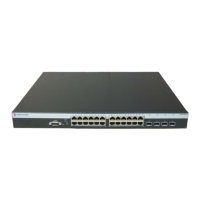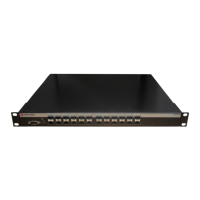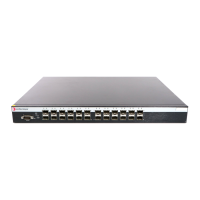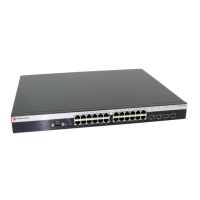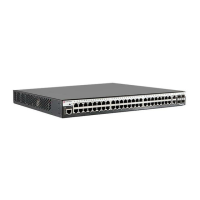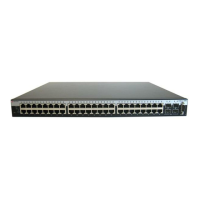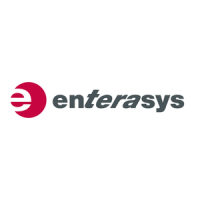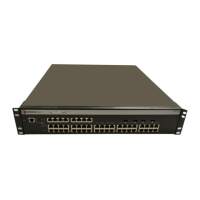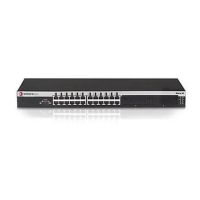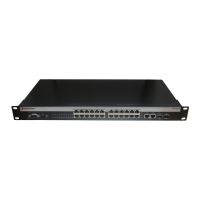Quality of Service Overview
Fixed Switch Configuration Guide 17-5
Additional port groups, up to eight (0 through 7) total, may be created by changing the port group
value. Ports assigned to a new port group cannot belong to another non-default port group entry
and must be comprised of the same port type as defined by the port group you are associating it
with. The creation of additional port groups could be used to combine similar ports by their
function for flexibility. For instance, ports associated with users can be added to a port group
called Users and ports associated with uplink ports can be added to a port group called Uplink.
Using these port groups, a class of service unique to each group can assign different rate limits to
each port group. User ports can be assigned a rate limit configured in one CoS, while Uplink ports
can be assigned a different rate limit configured in another CoS.
Port Type is a fixed value that determines the IRL and flood control resource capabilities based
upon the device the port belongs to. Knowledge of these capabilities is important when
configuring queue behaviors. CoS port type can be determined using the show cos port-type
command.
CoS Settings Reference to Port Resource Mapping
Use the CoS reference configuration to map the resource reference from the CoS settings
configuration to the port hardware resources being acted upon by this configuration.
• IRL CoS reference – Maps the CoS settings IRL reference to the IRL port resource the rate limit
is to be applied to.
Port Resources
Use the CoS port resource configuration layer to associate actual rate limiter values to a port group
and hardware resource. Configure CoS port resource by identifying the CoS hardware resource
type (IRL or flood control), port group, and port resource, followed by a rate limiter.
The IRL rate limit is specified as a unit (kbps) and a data rate. The flood control rate limit is
specified as packets per second.
• IRL – Setting an IRL rate limiter means that packets ingressing the port will not be allowed to
exceed the rate specified by the rate limiter. If the rate is exceeded, you can specify whether
packets that exceed the rate limit should be dropped and whether the port should be disabled.
You can enable or disable syslog and trap features.
IRL port resources are first referenced using the CoS settings and CoS reference
configurations. Ports are applied to the specified CoS port resources using the CoS port
configuration.
• Flood control – Setting a flood control rate limiter means that received packets of the specified
type that exceed the flood control threshold will be prevented from egressing any port.
Configurable packet types are:
– unknown unicast
–multicast
–broadcast
If the rate is exceeded, you can specify whether the port should be disabled. You can enable or
disable syslog and trap features.
Port Configuration
The CoS port configuration layer applies a port list to the port group. Configure CoS port
configuration by identifying the CoS hardware resource type (IRL or flood control) and port
group for this port configuration, a name for this configuration, a port list of ports assigned to this
port group, and whether the port list should cleared or be appended to any existing port list.
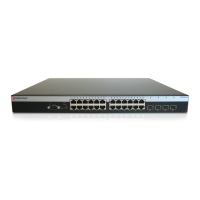
